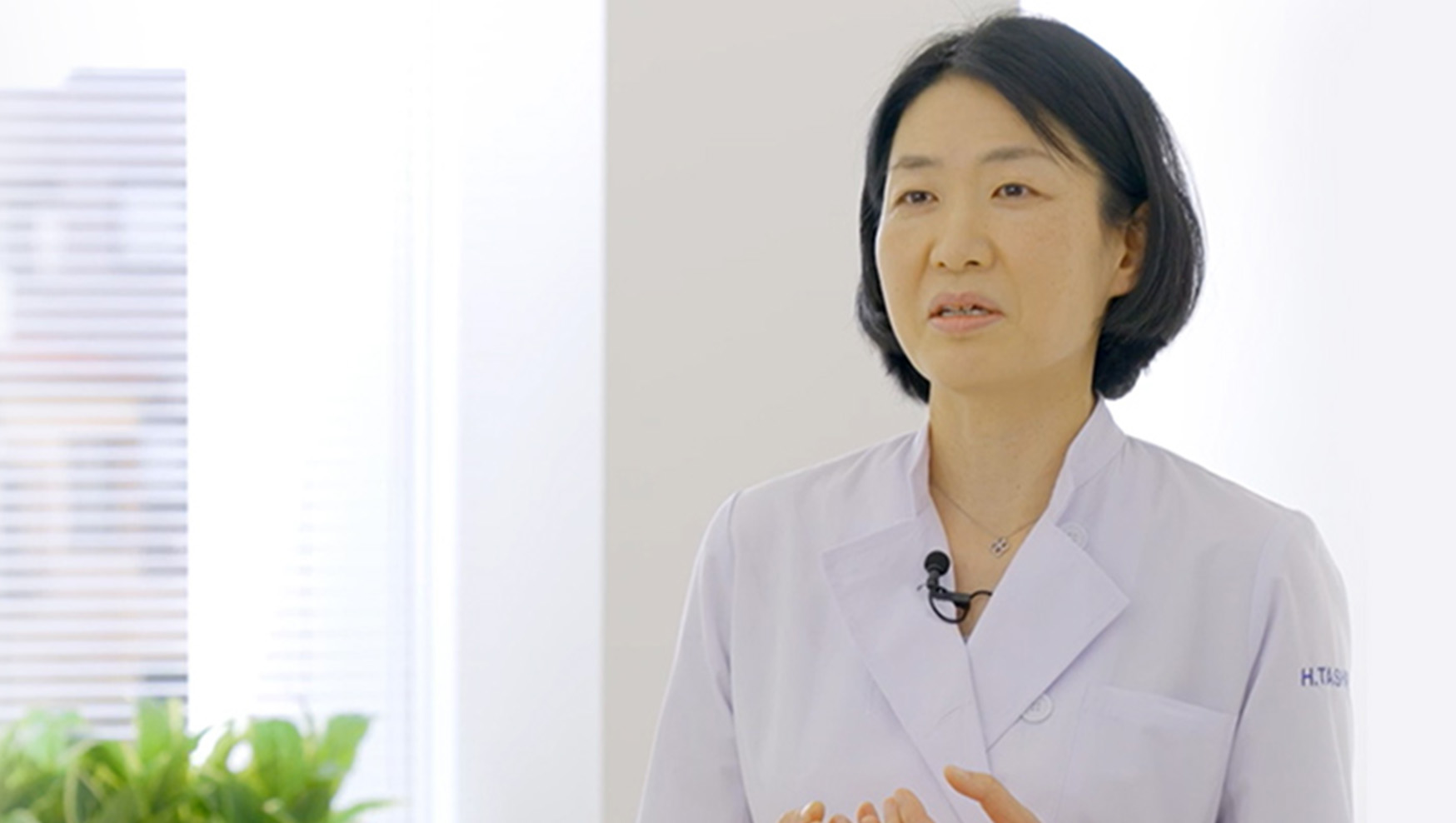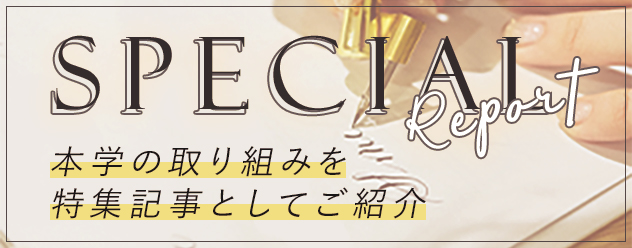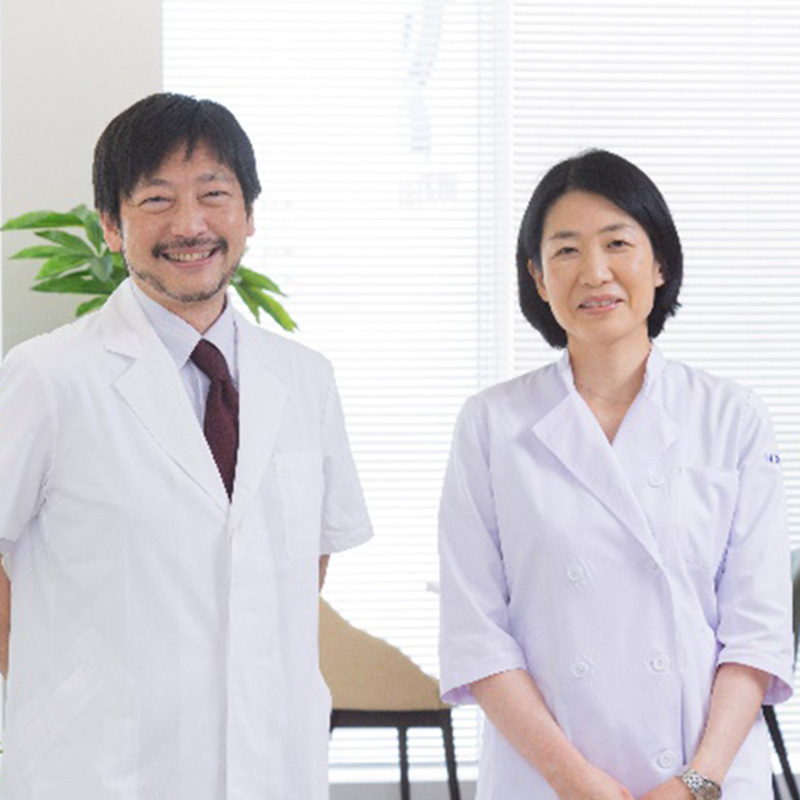In recent years, we have targeted hematologic cancers such as acute myelogenous leukemia and multiple myeloma.
Many anticancer drugs have been developed, but it is difficult to cure completely.
The risk of recurrence and drug side effects remains high.
Associate Professor Haruko Tashiro and Senior Assistant Professor Ryosuke Shirasaki of the Hematology Group/Laboratory of the Department of Internal Medicine Medicine, Teikyo University School of Medicine,
While treating patients at the forefront of clinical practice,
We are also conducting basic research to establish highly effective treatment methods that place less burden on patients.
Blood cancer that is still difficult to cure
Treat with the patient's own immune cells
Acute myeloid leukemia (AML), one of the blood cancers, is a disease in which immature cells before becoming mature cells become abnormal and become cancerous and proliferate abnormally, resulting in the inability to produce normal blood cells. Anticancer drug therapy is performed as standard treatment, but depending on the type of cancer, anticancer drugs may not be effective, and even if the drug is effective, it is difficult to completely cure. If possible, hematopoietic stem cell transplantation is performed, but there are many people who die from complications of the transplant or suffer from long-term side effects after the transplant.
Under such circumstances, CAR-T cell therapy is attracting attention as a new cancer treatment method. CAR-T cell therapy is approved for acute lymphocytic leukemia, malignant lymphoma, and multiple myeloma in Japan. is already being used in clinical practice.
Generation and administration of CAR-T cells

Express and increase CAR (Chimeric antigen receptor) with a binding site and return it to the patient's body
Suppression of AML cell growth by CLL-1 CAR-T cells
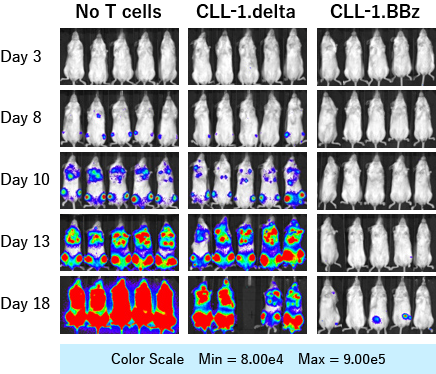
Mice treated with CLL-1 CAR-T cells showed no increase in cancer cells after 18 days
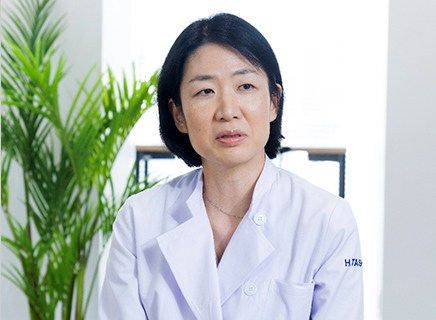
Associate Professor Tashiro is conducting research aimed at establishing CAR-T cell therapy that targets CLL-1, a protein that is specifically expressed in AML cancer cells. “The main feature of CAR-T cell therapy is that it can attack cancer cells with the patient’s own T cells, and it is effective even when drugs are ineffective or relapse occurs after transplantation. CAR-T cell therapy for AML There are many hurdles to overcome before T cells can be applied clinically, but we are making steady progress one by one.” (Associate Professor Tashiro)
CAR-T cells are called "living drugs", and if even a small number of them continue to live in the patient's body, they can eradicate cancer cells the moment they are about to recur. However, there Associate Professor a problem that T cells become exhausted after fighting cancer cells for a long period of time and become ineffective. .
Analyzing tens of thousands of genes at once
Elucidating the mechanism of drug resistance
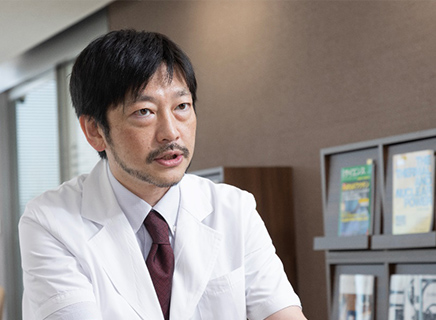
Senior Assistant Professor Shirasaki, who is conducting basic research for the development of new treatment methods with Associate Professor, specializes in multiple myeloma. Multiple myeloma, a hematological cancer that is as difficult to cure as AML, is a disease that develops due to the proliferation of antibody-producing plasma cells, which are lymphocytes. Unlike AML, allogeneic transplantation is rarely performed because it is a disease that affects many people aged 70 and over, and treatment with anticancer drugs is the main treatment, but cancer cells acquire drug resistance as the treatment continues. If you do, the medicine will stop working.
Senior Assistant Professor Shirasaki's research focuses on finding the key to enhancing the efficacy of multiple myeloma, rather than directly treating multiple myeloma. Using an experimental tool called "CRISPR screening" that he acquired while studying in the United States, he will analyze tens of millions of cells to find genes related to drug resistance and treatment sensitivity. For example, identify which gene causes resistance in cells treated with anticancer drugs, and administer another drug (combination drug) that targets that gene so that the anticancer drug is effective for a long time. make it
Image of CRISPR screening
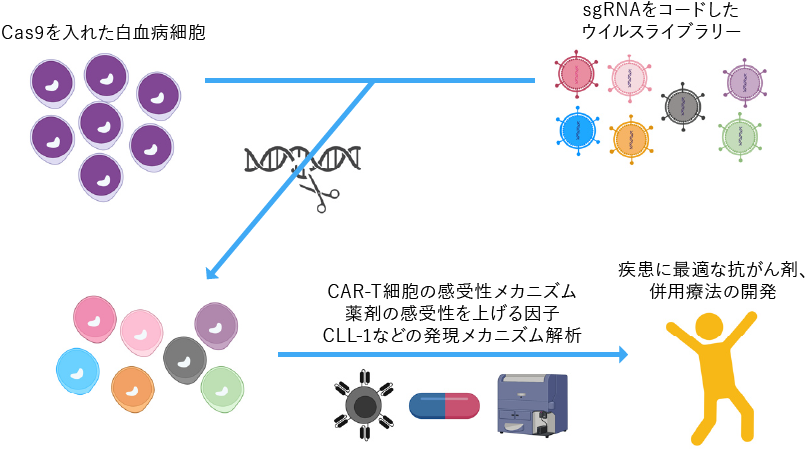
Find out which genes are involved in drug susceptibility and drug resistance
“In Japan, there are not many facilities that perform CRISPR screening yet. After returning to Japan, I will analyze using this tool and try to clarify the molecular mechanism of drug resistance, which is extremely important in cancer treatment. I am searching for the CLL-1 CAR-T cell susceptibility factor, which is being studied by , and investigating how CLL-1 is regulated in cells.” (Senior Assistant Professor Shirasaki)
Senior Assistant Professor 's research is effective not only for blood cancer, but also for enhancing the effects of all cancer treatments, so he is conducting research in collaboration with the department of gynecology on campus and Internal Medicine of hematology at other universities.
Studying abroad led to basic research
Breakthrough in blood cancer treatment
Both Associate Professor Tashiro and Senior Assistant Professor Shirasaki are Internal Medicine who have treated patients with blood cancer. Currently, he is pursuing treatment and research in parallel, but he says that the reason he started basic research was his suffering as a Internal Medicine.
“It was my 13th year as a doctor when I studied abroad. I felt conflicted about the fact that there were patients who could not be saved even if I tried.I was suffering from burnout syndrome, and I wanted to leave clinical practice for a while, so I came across CAR-T cells when I went abroad to study. I didn't even know about the existence of CAR-T cells until then, so I vividly remember being very moved when I saw the CAR-T cells that I had cultured and created attacking tumors." Associate Professor Tashiro)
Associate Professor Tashiro, who was given a mission to create CAR-T cells for AML while studying abroad, succeeded in creating CAR-T cells that target CLL-1, a protein that appears specifically in AML cells. Since then, he has been working on CLL-1 CAR-T cell research.
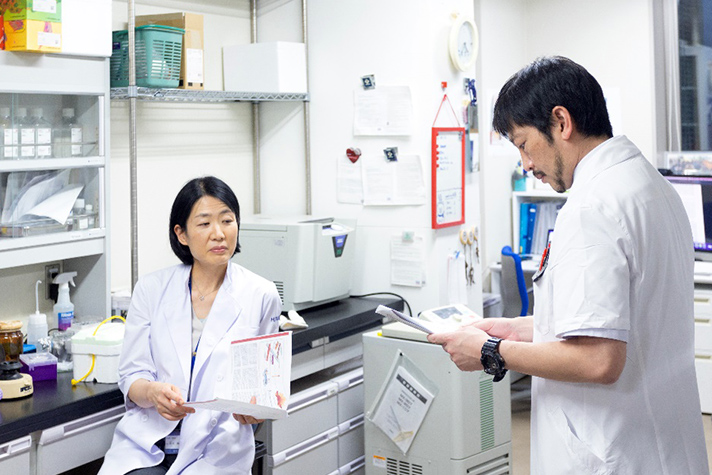

Senior Assistant Professor Shirasaki studied abroad when he had been a doctor for about 10 years. After all, he decided to study at a time when he was worried about becoming a Internal Medicine.
“While working at a university hospital, I felt guilty that I was only doing clinical work. With the advice of those around me, I decided to take the plunge and focus on research overseas. At first, I was hoping for a different theme, but in the end I'm glad I learned CRISPR screening." (Senior Assistant Professor Shirasaki)
Cells and medicines do their best
Patients do not have to work hard

Neither AML nor multiple myeloma are diseases that can be easily cured at present, but we aim to overcome intractable blood cancers by advancing research. Senior Assistant Professor Shirasaki's research has shown that some drugs and foods that are not anticancer drugs, such as those already on the market, enhance the therapeutic effects of anticancer drugs. We will also clarify the mechanism of drug resistance so that therapeutic effects can be obtained for a long time.
“I always tell my patients that they don’t have to work hard. It is the patient’s cells and the anticancer drug that do the best. I would like to be a doctor that people can entrust me with.” (Senior Assistant Professor Shirasaki)

Associate Professor Tashiro's ultimate goal is "a blood cancer treatment that does not require a transplant." Associate Professor Tashiro, who is also a certified transplant doctor, has saved many patients with transplant treatment, but at the same time, he knows the risks of transplant treatment. As a transplant doctor, it is my earnest wish to establish a cure that does not require a transplant.
“First of all, I would like to work with Dr. Shirasaki to make some progress toward the establishment of CAR-T therapy for AML. I always want to provide medical care that people feel good about." (Associate Professor Tashiro)
The blood group/laboratory was just launched in April 2021, but is making steady progress, including joint research with other faculties within the university, other clinical departments of School of Medicine, and companies. Driven by the desire to "save as many patients as possible," he continues to struggle to improve both clinical practice and research.
